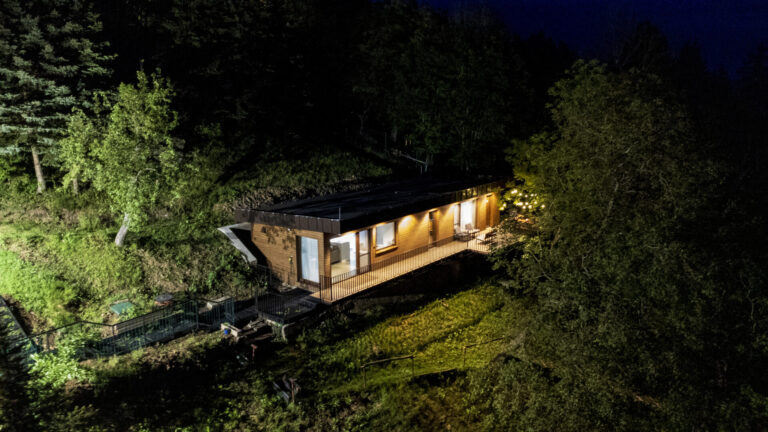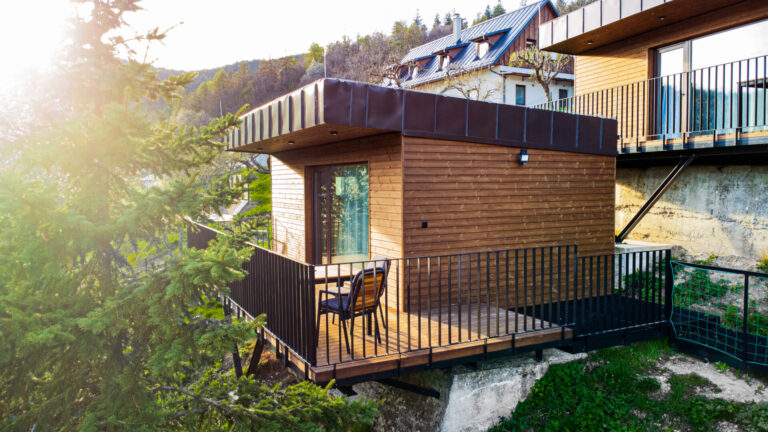In the heart of Central Slovakia rises the picturesque town of Banská Štiavnica, a jewel rich in history, culture and architecture. Many people know it for the Štiavnica lakes, but that’s not all. This beautiful town, nestled in the Štiavnica Hills, is home to many exceptional monuments that testify to its rich heritage and importance in the history of Slovakia.
Behind the history
The concentration of historical monuments and interesting places in Štiavnica is so high that you won’t know where to go first. Among the most interesting tourist sites are St. Trinity Square, Town Hall Square and Kammerhofská Street. These places offer a glimpse of important historical monuments that testify the rich history and cultural heritage of this wonderful city.
St Catherine’s Church is located right in the centre of the city. It was built in the Gothic style, with a presbytery uncharacteristically oriented to the south. Inside, a rare Gothic fresco of the Last Judgement has been preserved. During the Baroque period, St Catherine’s underwent minor modifications. Its interior is decorated with a star vault, late Gothic sculptures of the Madonna and the Crucified Christ, and a Baroque altar. The building of the town hall stands next to the church, adding to its historical atmosphere.
The town hall building has undergone various reconstructions in the past. It was originally built in the 14th century as a seat for the needs of the town council. It acquired its present appearance in the 18th century. The top is dominated by the characteristic clock tower, which gives the building an unmistakable appearance and has become one of the city’s major cultural icons.
The townhouses on St. Trinity Square form an inseparable part of the historical centre of Banská Štiavnica. This square space, lining the historic streets, is surrounded by the houses of wealthy miners and bourgeoisie. Their construction dates back to the 16th century, when intensive urbanisation of the town took place.
Among these houses we can also find several that served as residences for various institutions or were privately owned by prominent personalities. For example, the Pischl House, belonging to the parents of Maria Pischl, who was the student love of Andrej Sládkovič, the Joerges House, which later housed a printing house, or the Richter House, which used to be inhabited by the well-known collaborator of Matej Bel, Jozef Richter. These historic houses not only enliven the character of the square, but also bear witness to the rich history and cultural heritage of Banská Štiavnica.
The sculpture of the Plague Column is located on the Square of the Holy Trinity in Banská Štiavnica. It was built to commemorate the plague that seriously affected the town in the early 18th century. The column depicts statues of the protectors against the plague, including the patron saints of miners and the Holy Trinity. This historic sculpture not only recalls a difficult period in the past, but also serves as a symbol of faith and hope to ward off danger and protect the population from death and disease.

The town offers many other interesting sights, so if possible, plan a longer trip and enjoy all of the beauties of our city and surrondings.
Don’t forget the lakes!
Lakes in Štiavnica, called “tajchy” in Slovak, are a a unique technological invention of its time, originally built for the needs of local mines. Today, however, these lakes, surrounded by the beautiful nature, offer attractive opportunities for swimming and relaxation in the vicinity of this historic town, which is listed on the UNESCO List of World Heritage Sites.
The Štiavnica lakes represent a unique water management system, unparalleled in Europe. They are artificial lakes, built to solve the water shortage in the historic Štiavnica mines. Engineers had to meet this challenge by creating an ingenious system of capturing rainfall from the mountain slopes and ditches, which then feeds water into the reservoirs. The lakes or “tajchy” were used to power the mine machines, where they provided the drive for various mining machines and equipment. You see.. Madeira has its levadas, Štiavnica tajchy 🙂

In the 18th century, mainly thanks to the efforts of prominent engineers such as Samuel Mikovini and the Hell family, most of the Štiavnica lakes were created. Originally there were about 60 of them, but today their number has fallen to only about a third. Among the largest lakes belongs Lake Počúvadlo with an area of 11,73 ha and the highest is Ottergrund Lake on the eastern slope of the Paradajs at an altitude of 939 m above sea level.
Today, the lakes no longer serve their original purpose, but in summer they have become a popular place of rest and recreation for locals and visitors to the town. Their calm waters and the surrounding nature provide an ideal environment for relaxation and well-being in the heart of the beautiful Štiavnické vrchy mountains.
If you do not find time to explore any other lakes, you will have inevitable opportunity to visit lake Klinger – which is located directly under our cabins. It is one of the most favourite lakes amongst the locals. Whether you prefer to swim, sunbathe or pop a cold one by the water – at Klinger lake, you can do all of these. And when the sun sets, you can enjoy the nature falling asleep around you.





